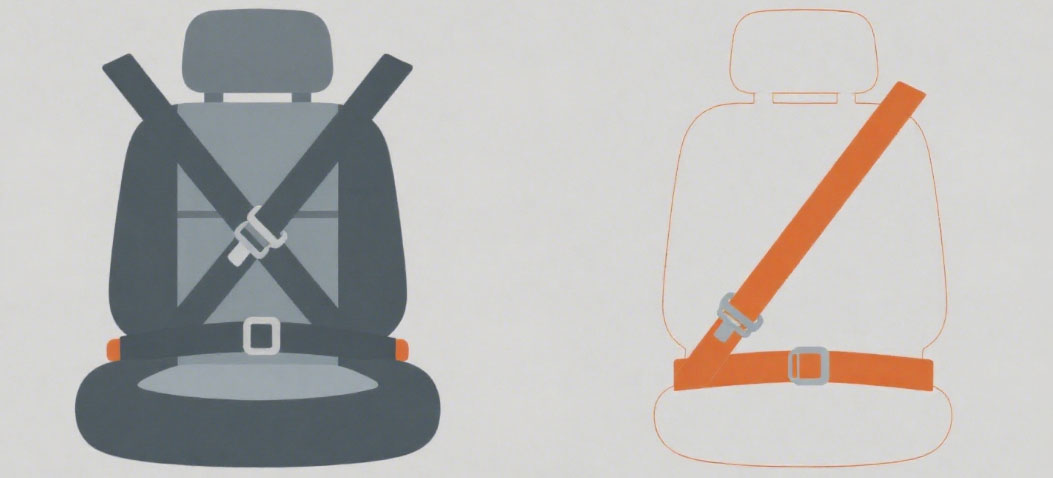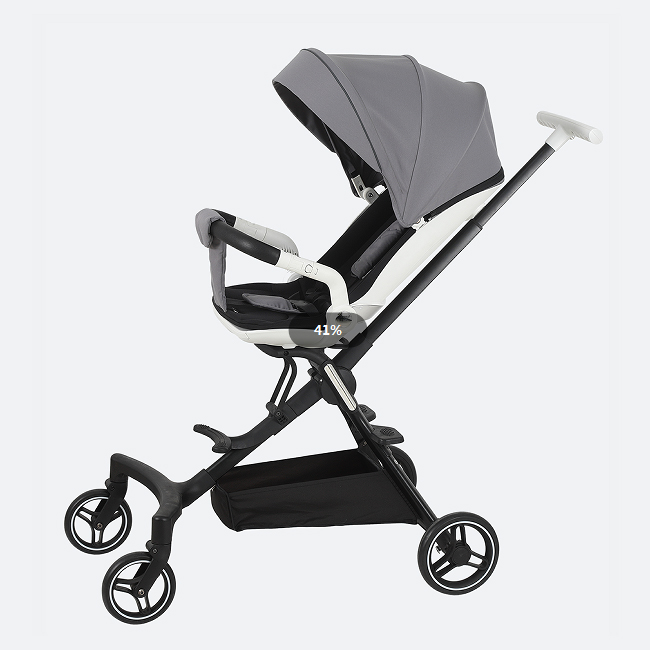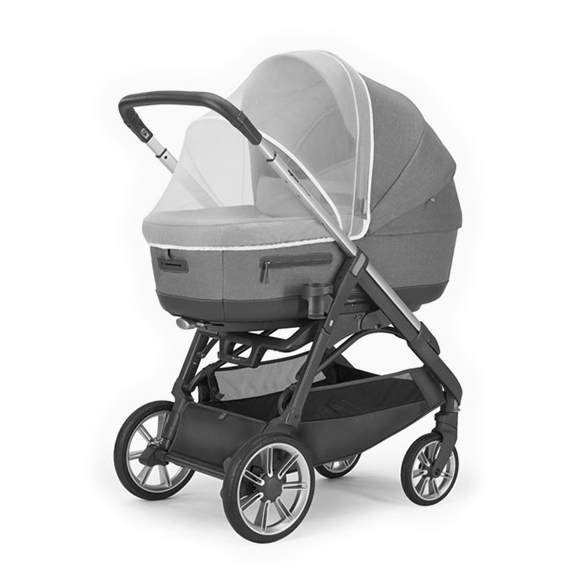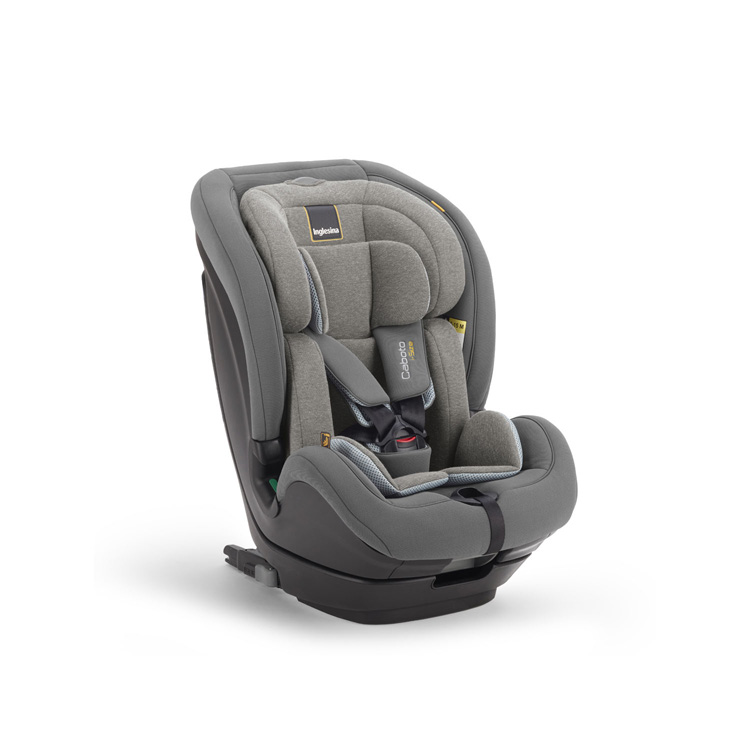Baby Car Seat Straps: Is 5-Point Harness Really Safer? Can It Be Loosened If Baby Struggles?

When taking kids out, babys in car seats often twist and turn in the straps, crying and trying to break free. At times like these, many parents wonder: 5-point harnesses look tight, but are they really safer than 3-point ones? If the child cries a lot, is it okay to loosen them a bit? Let's talk about these issues in detail today.
Let's start with structural differences, which are the core reason for their safety discrepancies. 5-point harnesses adopt a "two shoulders + two waists + crotch" five-anchor design: two shoulder straps extend from the top of the car seat backrest, securing the baby's left and right shoulders respectively; two waist straps pull out from both sides of the seat, fitting the sides of the waist; the bottom crotch strap passes between the legs and connects with the waist straps at a central buckle on the abdomen. This structure forms an X-shaped three-dimensional restraint network, capable of limiting upper body forward tilt, side tilt, and pelvic displacement simultaneously.
In contrast, 3-point harnesses follow the design logic of adult car seatbelts, consisting of one shoulder strap (crossing the chest diagonally) and one waist strap (wrapping around the waist), forming a triangular restraint through two shoulder anchors and one waist buckle. This structure focuses restraint on the upper-middle part of the torso, with weaker fixing ability for the pelvis and lower limbs, and cannot limit lateral shaking.
In terms of force transmission, the multiple anchors of 5-point harnesses create a "dispersion-buffering" mechanical path: during a collision, shoulder straps guide the impact force of the upper body to the top of the seat backrest, while waist straps and crotch strap transfer the force from the lower body to the seat base. The five fulcrums form a force balance, avoiding excessive force on a single part. A simulated high-altitude fall experiment conducted by the National Fire and Rescue Administration in conjunction with the CCTV 3·15 Gala showed that 3-point harnesses undergo severe displacement under impact, causing the dummy's waist strap to be pulled under the armpits, the back strap to strangle the neck, and even extreme cases of limb tearing. In contrast, 5-point harnesses distribute impact force to the waist, hips, thighs, etc., through five anchors, keeping the dummy stable without displacement or structural failure.
Tests by the European New Car Assessment Programme (Euro NCAP) are more intuitive: in a frontal collision at 50 km/h, 5-point harnesses reduce the forward head displacement of 18-month-old dummies by 30% and chest compression by 25% compared to 3-point ones. Research by the U.S. National Highway Traffic Safety Administration (NHTSA) also notes that 5-point harnesses reduce the risk of chest injuries in children by 40% in frontal collisions, and especially reduce ejection risk by 75% in rollover accidents.
Test data from the China Automotive Technology and Research Center (C-NCAP) is more targeted: under the 2021 regulations, child safety seats with 5-point harnesses reduce the head acceleration of 3-year-old dummies to 24g (vs. 32g for 3-point) in side impact tests, meeting the "Excellent" rating standard. The institution specifically emphasizes that the crotch strap design of 5-point harnesses effectively restricts children's forward body tilt, avoiding the "submarining" phenomenon caused by inertia during collisions – a phenomenon that occurs in 60% of cases with 3-point harnesses.
Now, regarding whether the harness can be loosened if the baby struggles: the answer is absolutely not! Many parents feel sorry for their crying children and think loosening it a bit won't affect safety, but this is a serious mistake. A loosened harness can cause the baby to slip out of the car seat or shake violently during sudden braking or collisions, possibly hitting hard objects in the car and suffering severe injuries.
So, what to do if the baby keeps struggling? Struggles may stem from discomfort. Parents can check if the harness is too tight, adjusting it to a proper tightness where two fingers can fit between the strap and the baby. They can also try adjusting the car seat angle for a more comfortable posture. Additionally, having the baby use the toilet before departure and ensuring they're neither hungry nor overfull can reduce discomfort and increase cooperation.
Clinical data from Beijing Children's Hospital's Emergency Department shows that properly adjusted 5-point harnesses (allowing two fingers under the collarbone) result in only 12% incidence of discomfort in children, significantly lower than 27% with 3-point harnesses. The American Academy of Pediatrics (AAP) recommends improving acceptance by choosing seats with breathable liners, conducting 10-minute "harness adaptation games" before departure, and using familiar comfort toys to distract the child.
In conclusion, for the baby's safety, always use 5-point harnesses correctly and never loosen them due to struggles. Meanwhile, pay attention to the baby's feelings and find ways to keep them comfortable, ensuring both safety and smooth travel.






